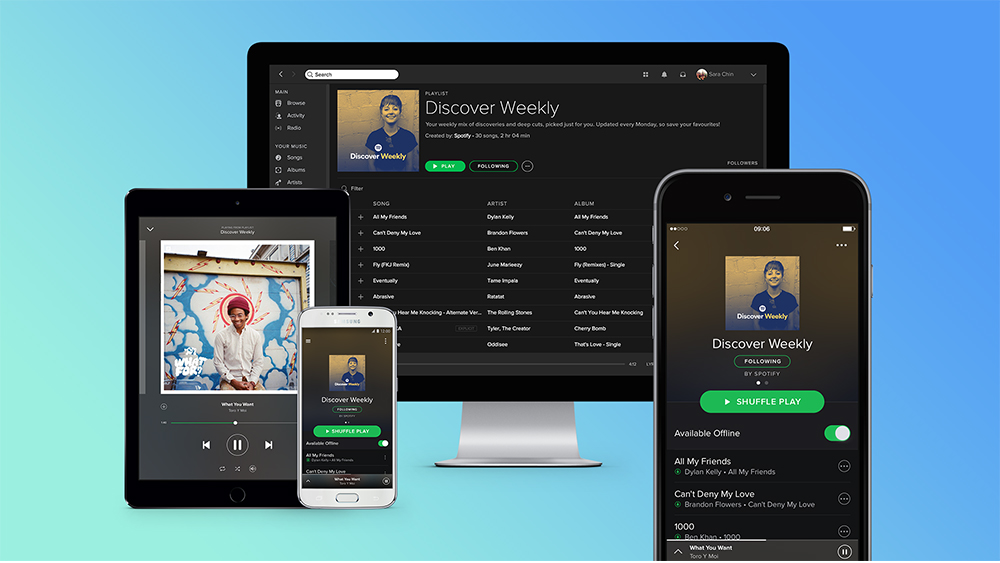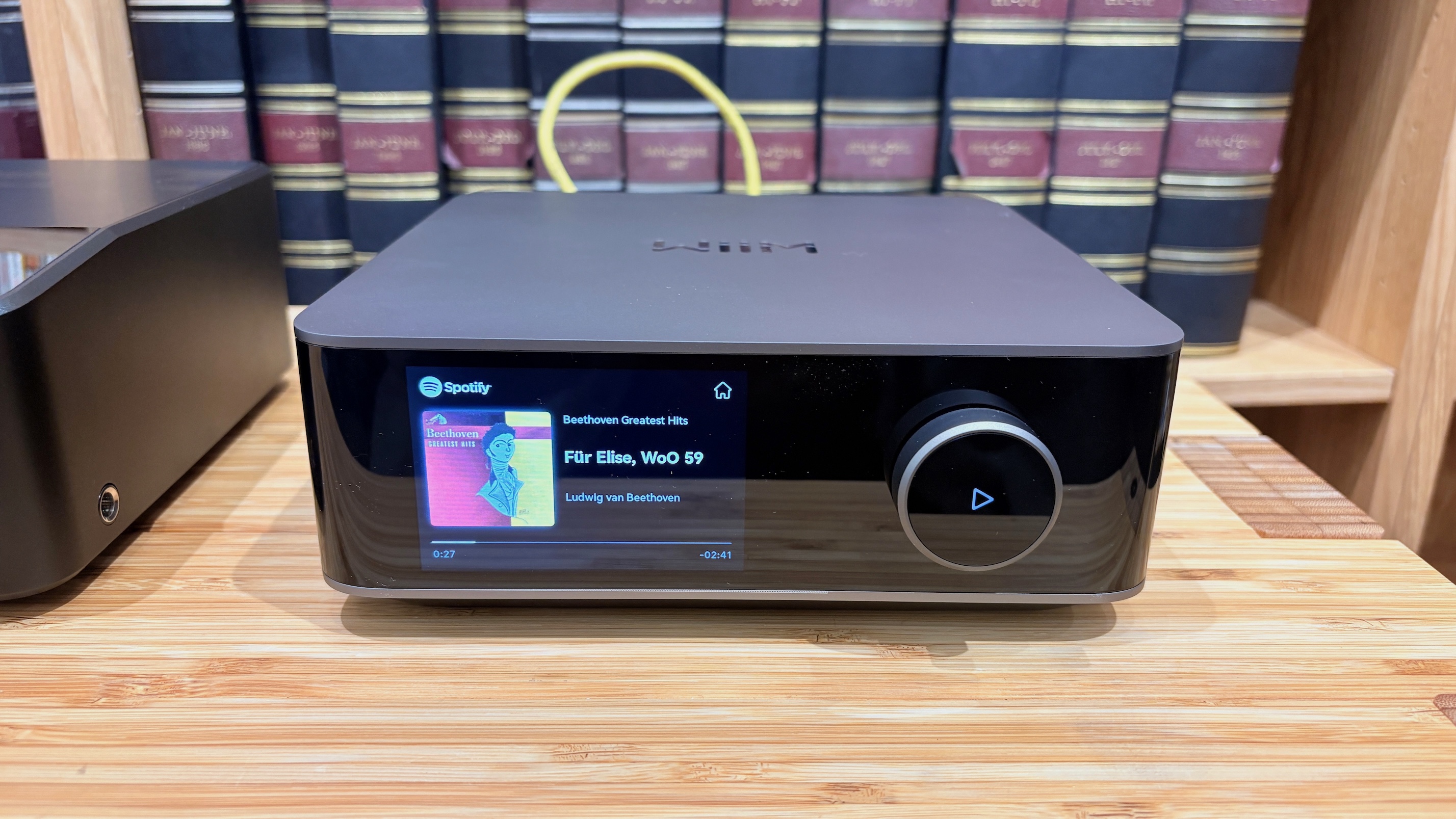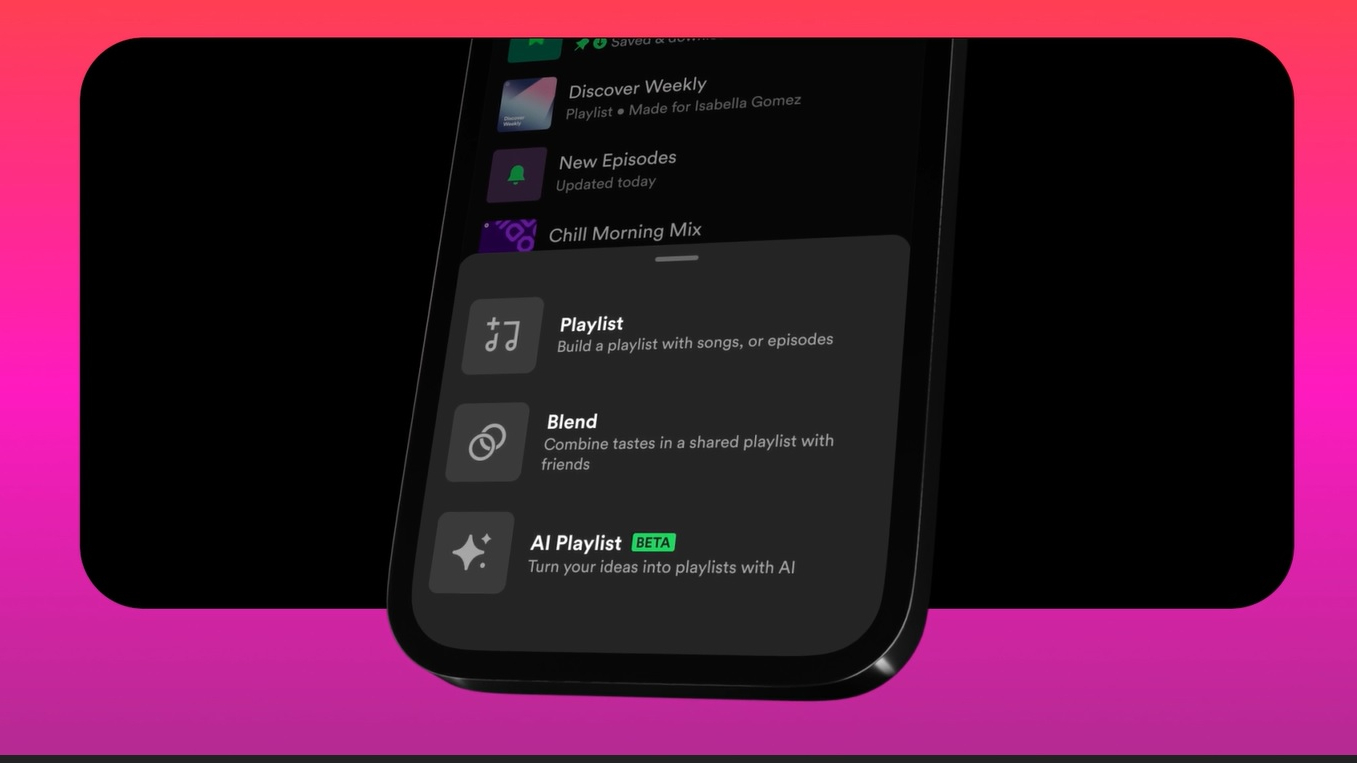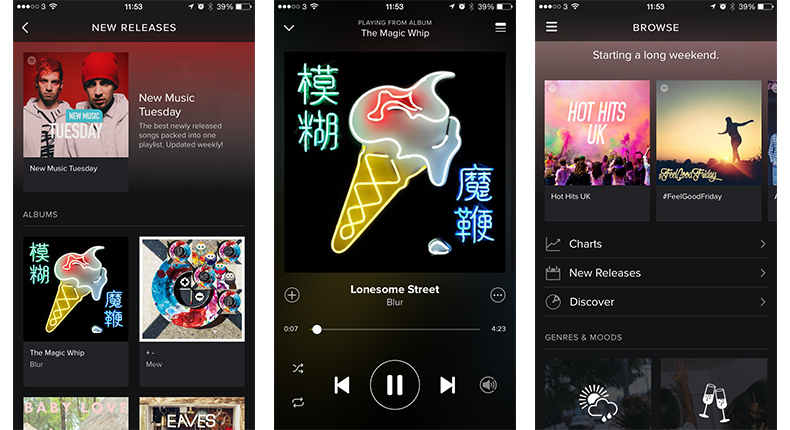Spotify Connect: what is it? Which devices support it?
The 411 on what is arguably the streaming world's best feature

With just shy of 700 million active users worldwide, Spotify is the world's largest and most popular music streaming service. But thanks to Spotify Connect – arguably the streaming world's most important feature – you're no longer restricted to listening to its catalogue solely through your phone or desktop.
Even better, Connect is compatible with Spotify's new Lossless feature, bringing higher-quality streaming to a wide range of devices.
The feature allows you to play the catalogue over wi-fi to any compatible audio product in your home – and with just two presses of a button! Since its 2013 release, Spotify Connect quickly became so simple and convenient to use that in 2020, streaming service rival Tidal followed suit, launching its own Tidal Connect feature. Sincerest form of flattery, and all that...
Spotify Connect is a godsend for house parties – so long as you trust your friends with the controls – but essentially, it's for anyone who wants to easily access Spotify's huge catalogue of songs, podcasts and curated playlists on smart speakers, hi-fi and AV kit, without the hassle of Bluetooth pairing.
So how does it work? How do you set it up? And what are the perks of Spotify Connect?
- Read our in-depth Spotify review
- Check out 12 of the best Spotify playlists to listen to right now
What is Spotify Connect?

Spotify Connect is a way of playing Spotify through your wireless speaker, soundbar, AV receiver, voice-controlled smart speaker, or any other compatible device, over wi-fi. It means you can play your favourite tunes anywhere in the house and crucially, without the need for any convoluted Bluetooth pairing between devices.
Best of all, Spotify Connect doesn't use your smartphone (or tablet or desktop) app to stream music. It plays music directly from its servers to the device, leaving your smartphone free for making calls and all other uses. You only have to use your phone to identify the speaker in the first place and then control music playback.
The latest hi-fi, home cinema and tech news, reviews, buying advice and deals, direct to your inbox.
And yes, Spotify Connect works with the firm's new Lossless quality, which is up to 24-bit/44.1kHz. Which means you can listen to higher quality tunes hassle-free on a decent pair of speakers (providing they're Connect-compatible, that is).
Though strangely, it won't tell you when you're listening to Lossless quality on a streaming device as it does on your phone. Whereas Tidal Connect does show which quality you're listening to.
- An excruciating timeline of our eight-year wait for Spotify Lossless – which was rumoured to be called Spotify HiFi
- Stream 25 of the best podcasts on Spotify
How does Spotify Connect work? What products support it?

Just like Apple AirPlay 2, Spotify Connect works over wi-fi. It seeks out compatible devices that are connected to the same wi-fi network and links them together wirelessly in order to stream music.
To use Spotify Connect, you'll first need a smartphone, tablet, laptop or desktop computer running the Spotify app. To use Spotify Connect with some devices you'll also need a Spotify Premium subscription, although some (the PlayStation 5, for example) are happy to work with Spotify Free.
To listen to Lossless (regardless whether it's over Spotify Connect or not), you'll need a Spotify Premium subscription.
And then you just need the right product. Chances are you might already have a speaker or amp that supports Spotify Connect: there are heaps of Spotify Connect-enabled products, including smart speakers, music streamers and other hi-fi streaming components, wireless speakers, smart TVs, wearables and car audio systems. You can find the full list of compatible kit here.
Spotify Connect really has become a must-have feature in the AV and particularly audio world, and these days you won't see many streaming-enabled products without it. In fact, it's become so ubiquitous it's usually the first feature you'll see on a streaming-capable product's feature list. Five-star kit like the Audio Pro C10 MkII wireless speaker, Naim Mu-so Qb 2nd Generation, or KEF LSX all-in-one system? They've all got Spotify Connect baked in for starters.
They're joined by the What Hi-Fi? Award-winning Sony WH-1000XM6 headphones, the Sky Q box, OLED TVs from the likes of Sony, Philips and LG, Apple CarPlay, the Xbox Series X and PS5, and many, many more.
Spotify Connect works on one device at a time, unless you're using a multi-room system such as Sonos, where you can stream music to a group (encompassing two rooms or more, set up via Sonos's app).
How to set up Spotify Connect

Spotify Connect is simple to use. Download the latest version of the Spotify app to your control device – a smartphone, tablet or computer, say – and make sure both it and your chosen product(s) are connected to the same wi-fi network.
On your smartphone, launch Spotify, log into your subscription account, and select a song to start playing. Click the 'Now Playing' bar, then the device logo at the bottom left-hand corner of the screen. This will show which of your connected products can play from Spotify. Select a device (the text will go from white to green) and music will start playing on that device. Magic!
If you're using Spotify Connect to listen to a song on another smartphone or tablet, make sure both devices are logged in to the same Spotify account and simply follow the steps above.
On the desktop app, click the 'Connect to a device' button in the bottom-right corner. This brings up the devices menu. Select the one you'd like to use, and it'll do the rest.
Spotify claims using Connect lets you switch between multiple products "without skipping a beat". In reality, there's always a tiny bit of delay when you swap products, but it's much quicker than having to pair over Bluetooth every time.
Once you're all set, your smartphone or computer becomes the remote control: select a song or playlist, pause, skip or shuffle through Spotify's vast catalogue.
Another big advantage of using Spotify Connect (especially on a product that supports it natively), is when you fire up the app or switch between products, it will always adjust the volume automatically for the chosen audio product. Pretty neat.
- These are the best music streaming services
How do you use your smartphone while using Spotify Connect?

You can use it normally without worrying that whatever you're doing – sending a text, playing a game, watching a YouTube clip – will interrupt the music.
All songs are streamed directly from Spotify's cloud servers to your Spotify Connect product. Your phone acts purely as a controller.
First of all, this means playing Spotify won't sap your smartphone's battery. Since you're only using your smartphone or tablet to control playback, it goes a long way in prolonging the battery life.
Secondly, it means phoning to wish your mum happy birthday doesn't have to mean pausing your carefully curated playlist.
You can also switch between devices seamlessly. Were you listening to Spotify through your headphones on your way home? Once you've walked through the door, simply select your Spotify Connect-compatible stereo system in the app and the song will carry on playing through your speakers without having to pause or restart it. If it's non-stop music you want, you've got it.
Does Spotify Connect work with voice control?

If you use a smart speaker – like the Amazon Echo, Sonos Era 300, Amazon Echo Show 10 (3rd Gen) or Google Nest Hub (2nd Gen) – you can use voice commands to play music from Spotify on them.
Add your Spotify account to the list of music streaming services (this can be done in the Alexa or Google Home apps) and make sure you select Spotify as your default music player so you don't have to specify which service to use at every turn. Then simply say "Alexa, play the new Taylor Swift album" or "OK Google, play the John Wick soundtrack" and your smart speaker will oblige.
We can't see the HomePod Mini or HomePod 2 smart speakers supporting Spotify Connect anytime soon, although you can play Spotify through both Apple speakers via AirPlay. Just say "Hey Siri, play [band name] on Spotify" and it will do the rest.
Does Spotify Connect work with Spotify Lossless?

It does. The vast majority of Spotify's huge library is now available in Lossless, so you should have plenty of choice of what to play.
To use it, just select a track in its Lossless quality and play via Connect using the process detailed above.
As we've said, there's no indication that you're listening via Lossless when using it on a streaming device via Connect. Tidal Connect does show you the bitrate though, as does the Spotify mobile app. So hopefully Spotify will add this indicator to Connect via a future software update.
MORE:
These are the best free music apps: get free music on Android and iPhone
See our pick of the best Alexa speakers
Consider that the problem with hi-res audio is how you might be listening to it
Joe has been writing about tech for 20 years, first on staff at T3 magazine, then in a freelance capacity for Stuff, The Sunday Times Travel Magazine (now defunct), Men's Health, GQ, The Mirror, Trusted Reviews, TechRadar and many more. His specialities include all things mobile, headphones and speakers that he can't justifying spending money on.
You must confirm your public display name before commenting
Please logout and then login again, you will then be prompted to enter your display name.

